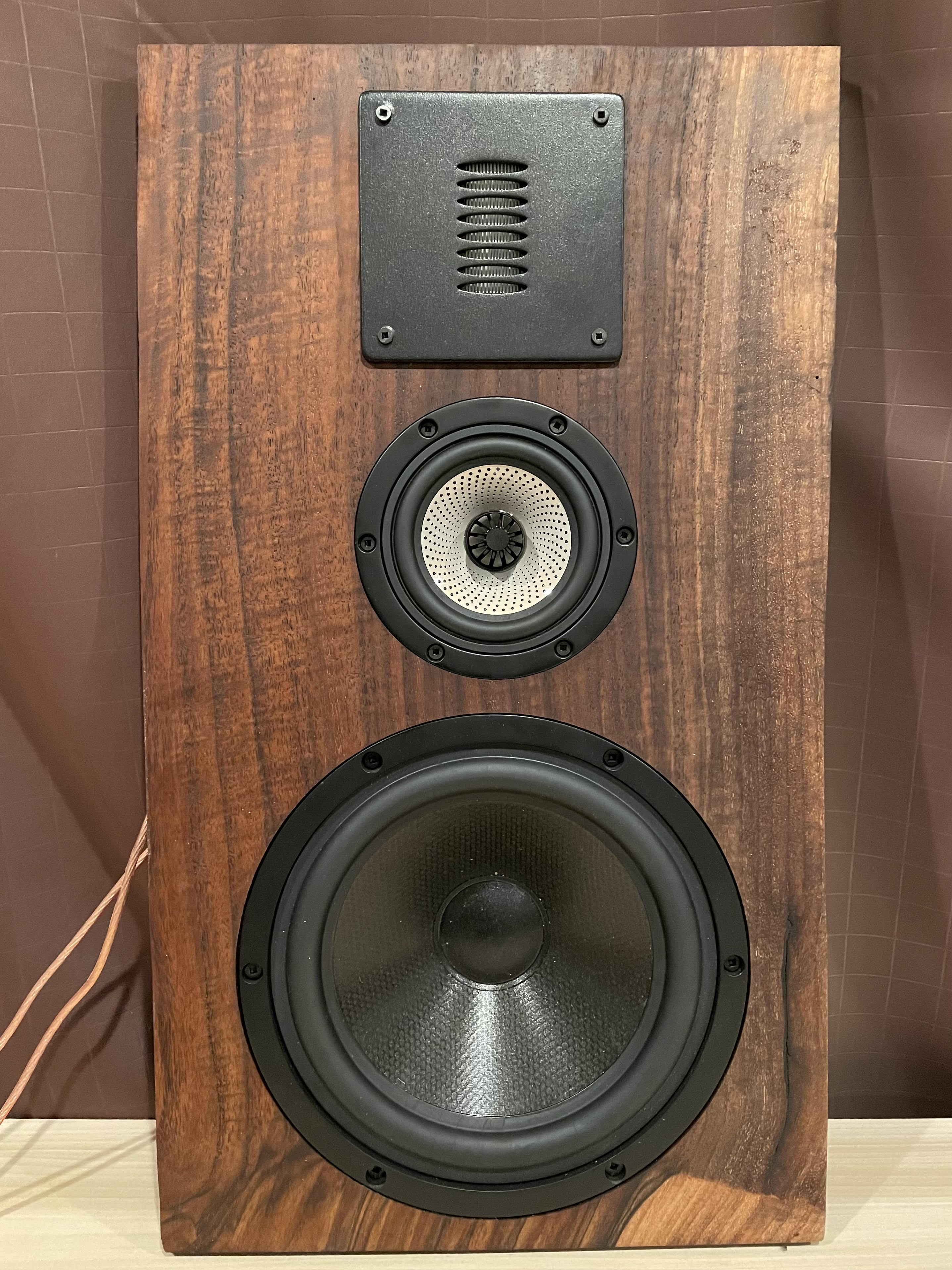NATUR
Wind | Walnut


In-wall speakers hand-crafted from solid walnut slabs. The Wind was designed
as part of a home renovation project. They are incorporated into a kitchen and
dining room that also features live edge shelving and a large live-edge redwood
bar table.
These use the cavity between studs as a large, sealed enclosure. They have
bright, energetic highs, detailed mids, and clean but modest bass. They are
voiced to sound lively at lower "cocktail hour" volume levels, but can go
loud when needed.
We have built two variations, the Wind I and Wind II. The Wind I uses an AMT
tweeter, whereas the Wind II uses a metal dome tweeter from Bliesma.
Additionally, the Wind II has a lower crossover frequency. The goal with the
Wind II was improved vertical dispersion and a slightly cleaner sound.
WIND I

The Eton ER4 air motion transformer tweeter is our first foray into
AMT tweeters. Percussion has an effortless realism to it that
immediately impressed us. However, the upper-mid frequencies have
a slightly crackly sound that detracts from vocals. For this
reason, we decided to use a very high crossover frequency.

The Eton Arcosia 4-318 is an incredible 4" wide-band driver. It has
impressive amounts of midrange detail, and can operate nearly
full-range. Our original plan was to operate it full-range, but we
found that it sounds better when crossed over to a tweeter at a
high crossover frequency.

The Eton Symphony II 8-412/C8/32 Hex has a 3-layer sandwich cone
featuring aramid fibers. It is used to augment the bass, with a
127hz (nominal) first-order low pass filter.
Wind I crossover details coming soon...
WIND II



We had some amazing BliesMa tweeters and we wanted to try them out in the Wind
design, so we ended up with the Wind II. The upper-mid performance of these
tweeters allows for a lower crossover frequency. The result is improved
directivity and slightly improved clarity in the Wind II. The Wind I, on the
other hand, has a slightly thicker/richer sound. I suspect this may be due to
harmonic distortion from running the Arcosia at such high frequencies. The Wind
II is more neutral and accurate. In the end, I went with the Wind II in my
kitchen.

The Wind II uses the BlieSMa T34A-4 aluminum-magnesium dome tweeter. This
is an incredible tweeter. It features an extra large 34mm dome, very high
sensitivity, and variable-thickness dome for an ultrasonic first breakup
mode.
The large metal dome yields a similar effortless realism as the AMT
tweeter, but with better directivity characteristics and upper-mid quality.

Again, we love the ETON Arcosia drivers. The Wind II features the same 4-318 driver as the Wind I, but with a lower crossover frequency.

To supplement the bass, the Wind II uses the 8" Hex Symphony II
8-512/C8/32. The only difference between this and the 8-412/C8/32 is the
phase plug instead of a dust-cap. This makes almost no difference at the
lower frequencies, and was chosen based on what was in stock at the time of
purchase.
Wind II crossover details coming soon...
DISCUSSION









